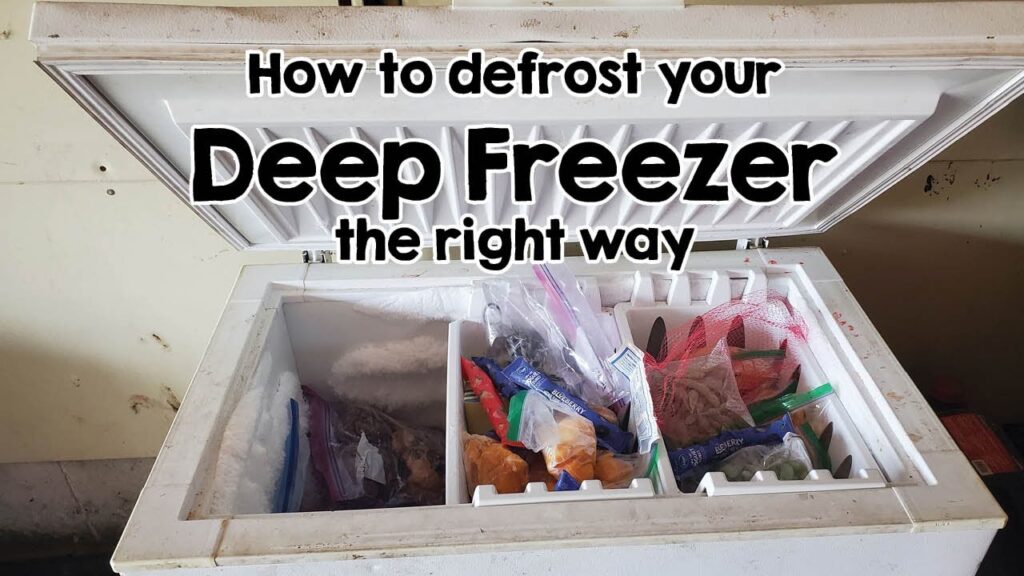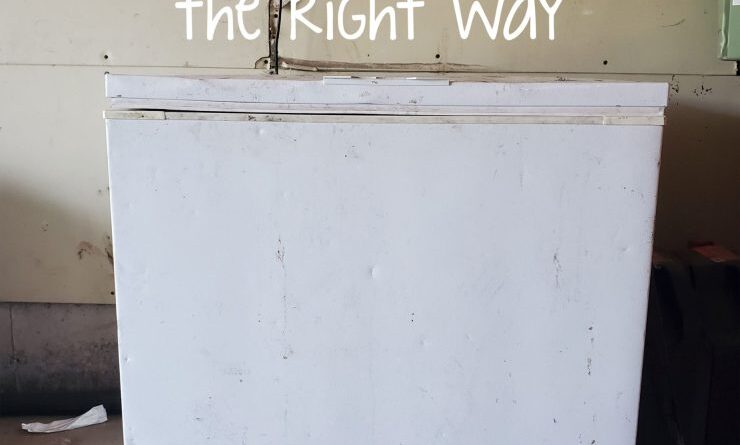
Are you tired of waiting for your freezer to defrost? If so, you’ll be thrilled to hear that we’ve got some handy hacks for you. In this article, we’ll explore some simple and effective methods to defrost your freezer in no time. Say goodbye to the lengthy waiting periods and hello to a quicker, hassle-free defrosting process. So, let’s jump right in and discover these genius hacks together!
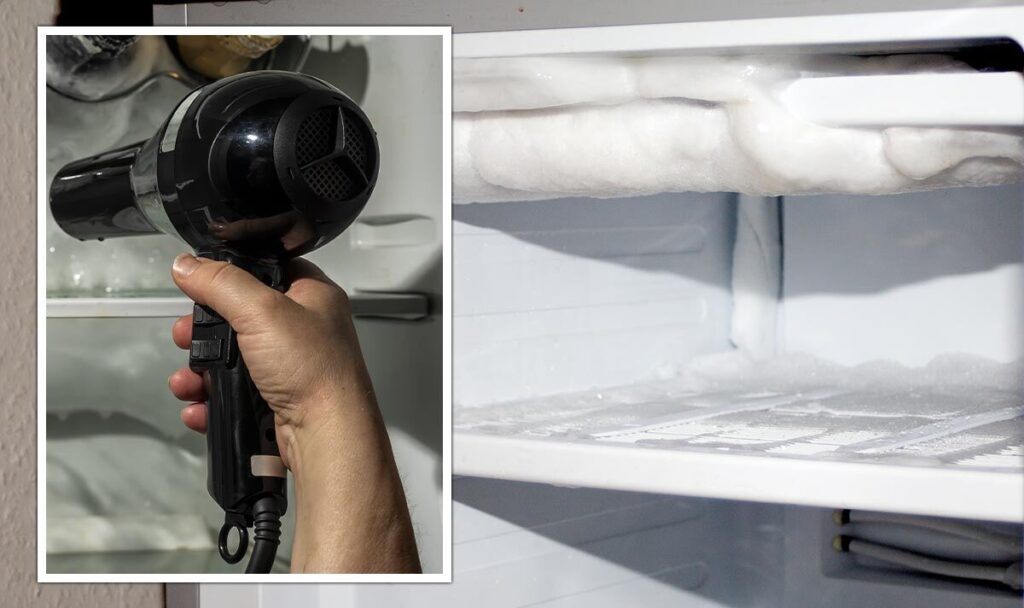
1. Understanding the Defrosting Process
1.1 What is freezer defrosting?
Freezer defrosting refers to the process of removing frost or ice that has accumulated inside your freezer. Over time, moisture from the food stored in the freezer can condense and freeze, leading to the formation of ice. This can not only reduce the storage capacity of your freezer but also affect its cooling efficiency.
1.2 Why is defrosting important?
Defrosting your freezer is crucial to maintain its optimal performance. When ice builds up, it acts as an insulator, preventing efficient airflow and cooling within the freezer. This can cause your freezer to work harder, resulting in higher energy consumption and increased electricity bills. Moreover, a frost-up can also lead to temperature fluctuations, potentially affecting the quality and safety of your frozen food.
1.3 Problems caused by freezer frost-up
A frost-up in your freezer can lead to several issues. Firstly, it reduces the available space for storing food, limiting your storage capacity. Additionally, the accumulated ice can cause freezer baskets and shelves to become uneven, making it difficult to organize and access your frozen items. Frost build-up can also result in the formation of frost crystals on the surface of food, leading to freezer burn and compromising the taste and texture of your frozen goods.
2. Preparation for Quick Defrosting
2.1 Emptying the freezer
Before you begin the defrosting process, it is important to empty the freezer of all its contents. Remove all the frozen items and transfer them to an alternative temporary storage location. This can be another freezer, a cooler with ice packs, or even your refrigerator’s freezer compartment. Ensure that the temporary storage location can maintain a safe temperature to prevent food spoilage.
2.2 Gathering supplies
To facilitate the defrosting process, gather the necessary supplies beforehand. You will need a large container or towel to catch the melting ice, a sponge or cloth for cleaning, hot water, a blow dryer or heat gun, and fans for airflow. Having all the required supplies readily available will make the defrosting process more efficient.
2.3 Planning for temporary food storage
While your freezer is defrosting, it is essential to plan for the temporary storage of your food. Take into consideration the duration of the defrosting process and the storage capacity of your temporary storage location. Prioritize consuming perishable items first and ensure that you have a clear plan for returning the food to the freezer once the defrosting is complete.
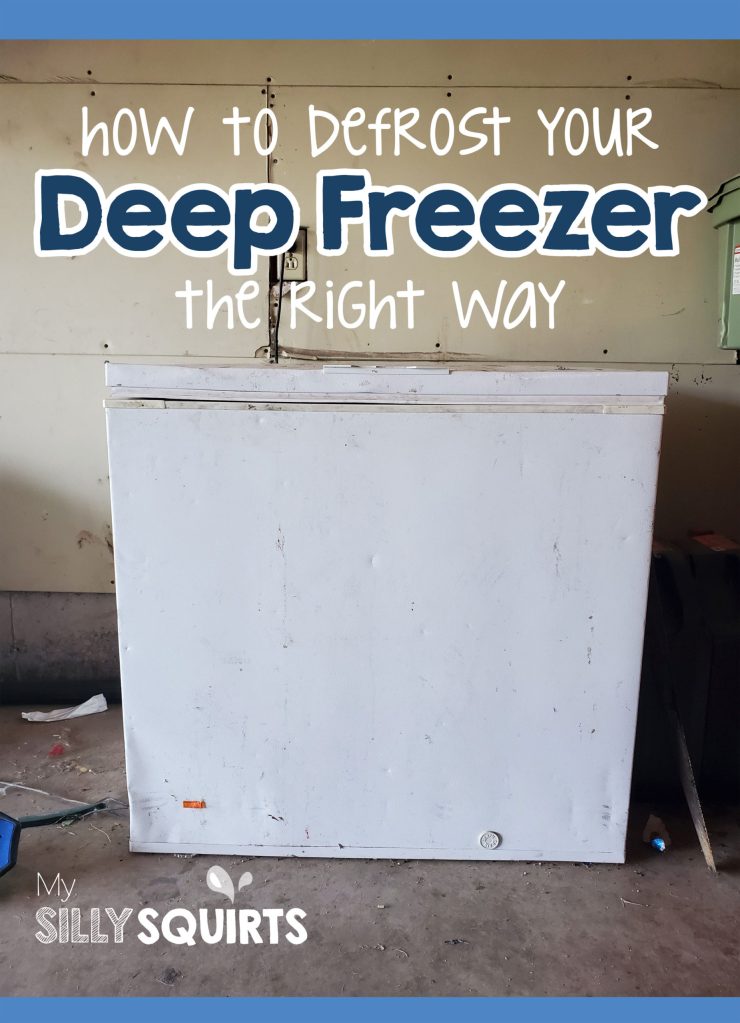
3. Quick Defrosting Techniques
3.1 Using hot water
One of the quickest ways to defrost your freezer is by using hot water. Fill a container with hot water and place it inside the freezer. Close the door and wait for the hot water steam to melt the ice. You can periodically check on the progress and gently scrape away any loosened ice with a plastic spatula. Be cautious not to use boiling water, as it can damage the freezer’s interior. Always prioritize safety and ensure your hands and feet are dry during this process.
3.2 Utilizing fans and airflow
Using fans to circulate air can help speed up the defrosting process. Once you have removed all the visible ice, position fans near the freezer, aiming them towards the interior. This will help disperse the cold air and accelerate the melting of any remaining ice. Keep the freezer door open to facilitate airflow and ensure the melted ice is collected in a container or towel.
3.3 Employing a blow dryer or heat gun
If you are looking for a faster way to melt the ice, you can use a blow dryer or heat gun. Set the tool to a low heat setting, and using sweeping motions, direct the warm airflow onto the ice. This will cause the ice to melt quicker, making it easier to remove. Be careful not to get too close to the ice or the interior of the freezer to avoid any damage. Also, always keep these electrical tools away from water to prevent accidents.
4. Safe and Efficient Defrosting
4.1 Ensuring safety measures
During the defrosting process, it is crucial to prioritize your safety. Remember to unplug the freezer before starting the defrosting procedure to prevent any electrical mishaps. Avoid using sharp objects, such as knives or ice picks, to remove the ice. These can cause damage to the freezer’s interior, leading to costly repairs. Use plastic spatulas or soft cloths instead to gently scrape away the ice.
4.2 Avoiding sharp objects
As mentioned earlier, sharp objects should be avoided during the defrosting process. Using knives or ice picks can not only damage the interior of the freezer but also pose a safety risk. If you encounter stubborn ice that is difficult to remove, it is best to allow it to melt naturally with the chosen defrosting technique rather than resorting to sharp objects. Patience and caution are key during this process.
4.3 Cleaning and sanitizing the freezer
Once the ice has melted, take the opportunity to clean and sanitize the freezer. Use a sponge or cloth with a mixture of mild detergent and warm water to clean the interior. Pay attention to any corners or crevices that may have accumulated dirt or grime. Rinse the surfaces thoroughly and ensure they are completely dry before reconnecting the freezer.
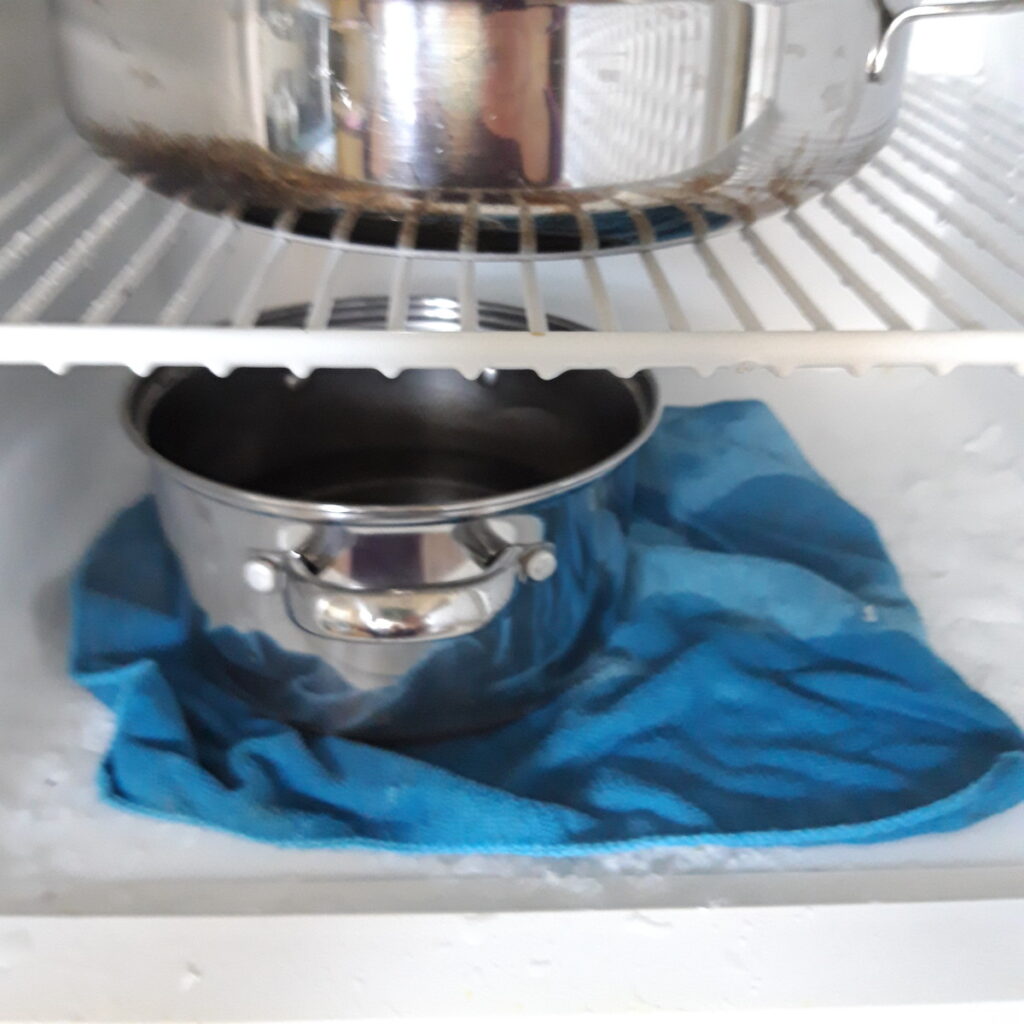
5. Preventing Future Frost Build-up
5.1 Organizing the freezer
Organizing your freezer can help prevent future frost build-up. Ensure that food items are properly sealed in airtight containers or freezer bags before storing them. This will minimize the release of moisture into the freezer, reducing the chances of frost formation. Additionally, arrange your items in an organized manner, allowing for proper airflow and preventing overcrowding that can lead to uneven cooling and subsequent frost accumulation.
5.2 Regular maintenance
Performing regular maintenance on your freezer is vital in preventing frost build-up. This includes cleaning the freezer regularly, checking and adjusting the temperature settings, and ensuring that the freezer door seals properly. Inspect the seals for any signs of wear or damage and replace them if necessary. Maintaining a well-functioning freezer will minimize the risk of frost accumulation and prolong the lifespan of your appliance.
5.3 Using frost-free models
Consider investing in a frost-free freezer model if you frequently experience frost build-up issues. Frost-free freezers are designed with built-in defrosting mechanisms that periodically heat up the freezer to melt any accumulated ice. This technology helps prevent frost formation and eliminates the need for manual defrosting. However, it is essential to note that these models may be more expensive upfront and consume slightly more energy than conventional freezers.
6. Cautions and Common Mistakes
6.1 Leaving the freezer unattended
Avoid leaving the freezer unattended during the defrosting process. Stay nearby, periodically check on the progress, and ensure that the melted ice is adequately collected in a container or towel. This will prevent water from spilling onto the floor, potentially causing slips or electrical hazards. By staying present during the defrosting, you can also address any issues that may arise promptly.
6.2 Using excessive force
While it may be tempting to forcefully remove stubborn ice, using excessive force can cause damage to the freezer’s interior and cooling elements. Be patient and allow the defrosting technique to work. Applying excessive force can lead to costly repairs or even render your freezer unusable. Remember, a gentle and cautious approach is the most effective and safe method for defrosting.
6.3 Ignoring signs of malfunction
Lastly, do not ignore any signs of malfunction during the defrosting process. If you notice unusual sounds, odors, or the freezer does not cool properly after defrosting, it may indicate a underlying issue. In such cases, it is recommended to contact a professional technician or the manufacturer’s customer support for assistance. Addressing these issues promptly can prevent further damage and ensure the optimal performance of your freezer.
In conclusion, defrosting your freezer is an essential task to maintain its efficiency and increase its lifespan. By understanding the defrosting process and following the outlined preparations and techniques, you can safely and quickly remove the built-up frost or ice. Remember to prioritize safety, avoid sharp objects, and practice regular maintenance to prevent future frost build-up. With these tips and tricks, defrosting your freezer will become a hassle-free and efficient task for you.
